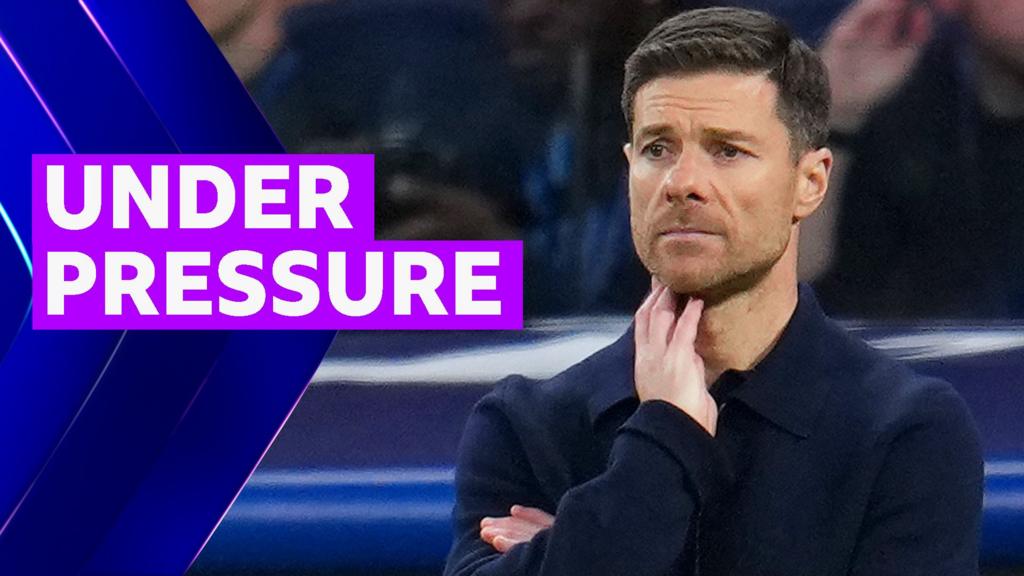- 10 Comments
Manchester United were given a demonstration of what it takes to be Europe’s best on Wednesday night – but manager Marc Skinner hopes his side will learn from it.
Lyon, the record eight-time Women’s Champions League winners, were far superior in their 3-0 win at Leigh Sports Village.
No shots on target, and a single touch in the opposition box in a difficult first half, it was a humbling night for United, who are competing in their first European main draw.
But Skinner, whose side had already secured a play-off spot for the knockout stage, said: “I am proud of the players. There was a lot of learning. Every one of our biggest defeats, we will always come back better.
“These players are maxing. You don’t want to lose a game but you have to learn from it. It feels horrible but you have to live within the performance parameters.
‘The plan was to be physical’
On the night, there were several reasons why Lyon – who are joint top in the standings on 13 points with Barcelona and scored late twice through Melchie Dumornay – stood out.
“In the first-half we gave them too much respect. They’ve got a cheat code, [Dumornay] just presses a button and wraps it into the top corner,” added Skinner.
Lyon’s greater squad depth was obvious, Haiti international Dumornay was unstoppable and Skinner’s selections didn’t pay off.
He opted for physicality, leaving star players Ella Toone and Jess Park on the bench, as well as integral midfielder Julia Zigiotti.
Lyon’s dominance was so evident at half-time that Skinner had to adapt sooner than he had hoped, bringing that trio on at 1-0.
They made a difference as United carried more threat and were able to control more possession – but Lyon’s victory was confirmed when Dumornay netted her late goals with moments of individual brilliance.
Asked why he left out some of United’s best players from the starting XI, Skinner said: “You can lose a game against Lyon on set-pieces and physicality so we had to have balance. We have four games in 10 days, so we had to be able to rotate.
“There has to be a plan ahead of all the games. The plan was to be physical and then always adapt it and change it in the second half.
“We probably didn’t get enough pressure on them in moments in the first half. I adapted it at half-time and we got some more ball retention.
‘Where we finish is a bonus’ – United’s potential route
Skinner’s reminder of Lyon’s ability cannot be ignored as they boasted a side including 2018 Ballon d’Or winner Ada Hegerberg and USA World Cup winner Lindsey Heaps.
Legendary France centre-back Wendie Renard was an unused substitute and elite players such as Lily Yohannes, Kadidiatou Diani and Marie-Antoinette Katoto all came on in the second half.
That quality and the “speed and physicality” were the differences on the night, according to Skinner, but he also recognised the gap between United and Europe’s elite.
“Theirs is the upper echelon of that,” added Skinner. “They pay for it. They have grown in experience and have built that team over a long period of time.
“The reality is you have to be at your game in every moment because if not, they can take their opportunities. They were the better team – but I would expect them to be.
“It’s a juxtaposition because I don’t want to lose games. But we also have to take a moment and go, we’ve already qualified, let’s see where we go.
“All the things you see, I see. I also know what the fix is, but you can’t do it in one moment, you have to build it. We are progressing.”
Lyon boss Jonatan Giraldez described United’s season as “super positive” and said the answer to progress is about building a mentality to be better than the day before.
United’s challenge will only get greater as they look to continue their journey in the Champions League.
They currently sit ninth in the 18-team league table and occupying an unseeded position for the play-offs.
If they can climb at least one place, they will be seeded and avoid stronger opposition.
Skinner said that gives them more incentive to perform in their final league phase match against sixth-placed Juventus on 17 December – but just getting to this stage has been an achievement.
“When you go into the knockout stages, it is what it is. You have to play the best teams,” he added.

Related topics
- Football
- Women’s Super League
- Women’s Football












